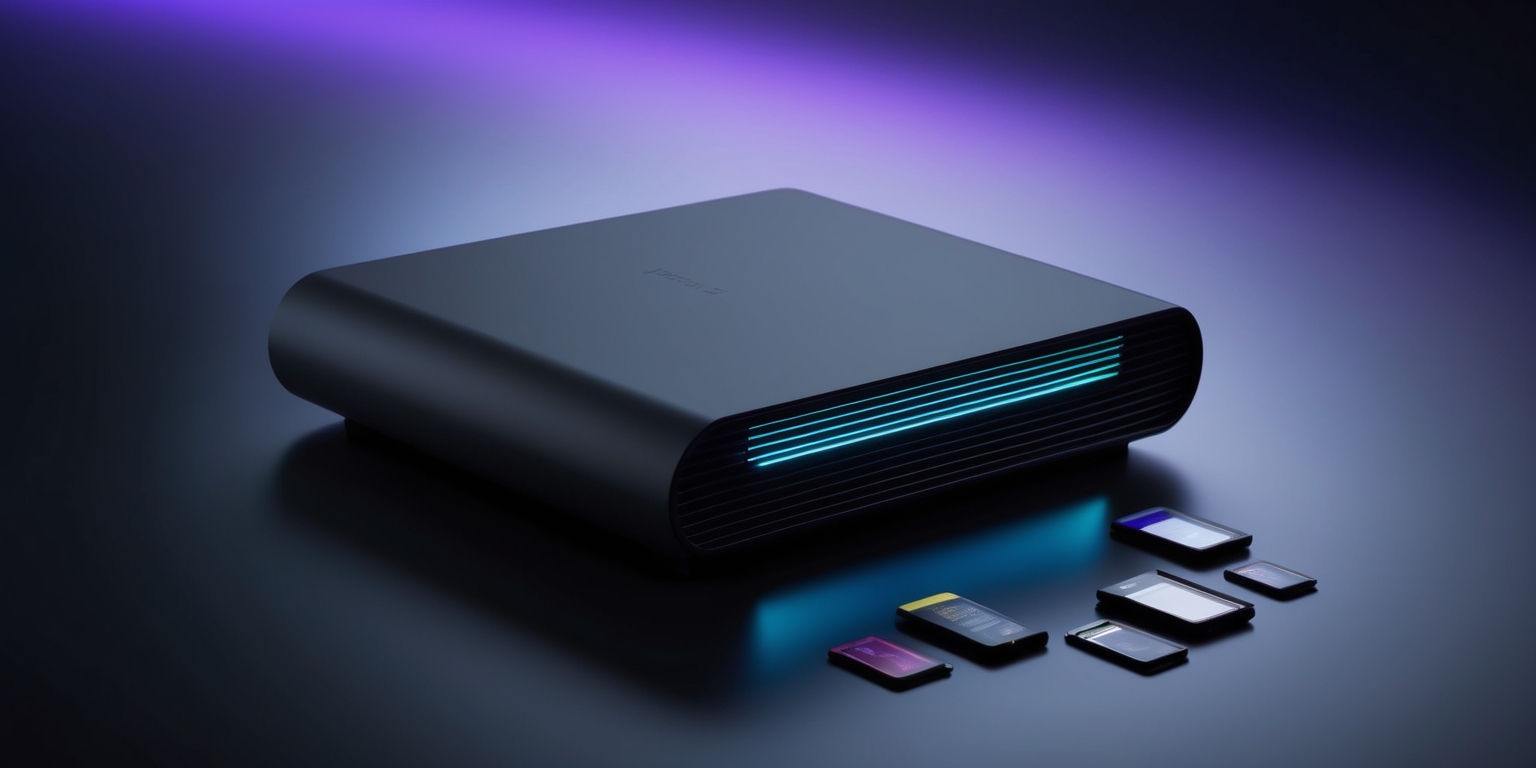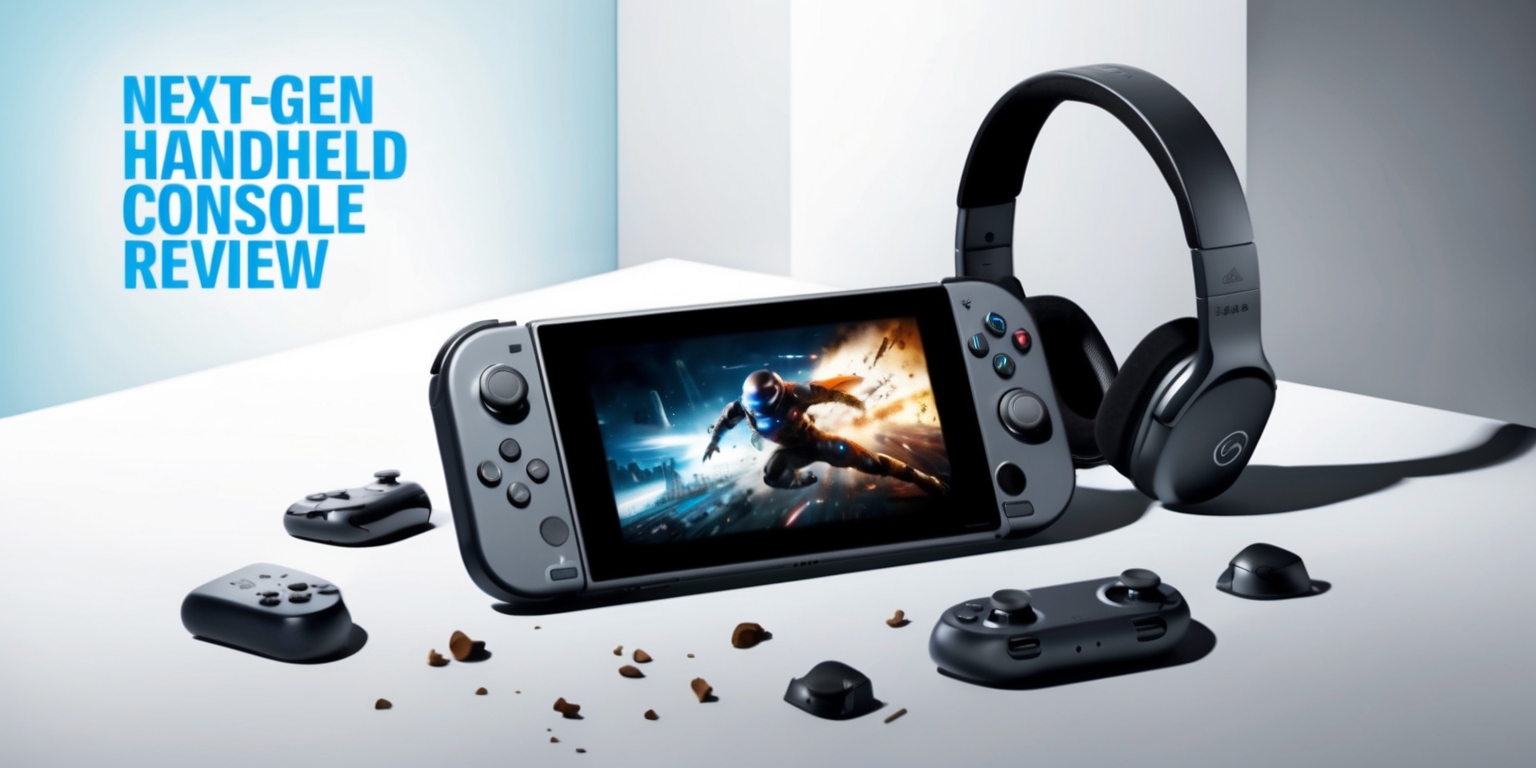Revolutionizing Portable Gaming: Mastering Storage on the Next-Generation Console
Apr-10-2025

The ever-evolving world of gaming now welcomes a new era with a console that combines power with portability. The latest handheld innovation offers gamers a blend of impressive internal memory and the promise of new gameplay experiences. As game sizes swell and graphical fidelity scales new heights, enthusiasts have reason to explore every aspect of this system’s storage options. From understanding the internal capacity to learning about external expansion solutions, Each nuance is key to molding the gaming journey. For fans transitioning from earlier models, these advancements spark both excitement and the need for careful planning to avoid running short on space during long gaming sessions.
Breaking Down the New Console's Capacity
This next-generation handheld system is turning heads Equipped with an impressive 256 GB of built-in memory. Compared to previous models where storage was limited to 32 GB or 64 GB for certain editions, this jump in capacity is impressive. Much of this memory is allocated to system operations, but once accounted for, there remains plenty for digital game libraries. Gamers must plan their installations with the idea that larger, more detailed games will soon become common. The advancement in hardware not only accommodates a richer gaming experience but also ensures that high-fidelity titles and expansive worlds can be stored without constant shuffling. In this setup, the balance between pre-installed system files and available space for games becomes a critical factor for optimal performance.
Examining the Internal Storage Benefits
The console’s internal storage offers an expansive playground for digital content, making it easier to keep a sizable collection ready to play. By offering eight times the memory of the base models, the system empowers users to download and Relish an eclectic assortment of titles free of the frequent need to manage storage manually. The improved capacity supports modern, high-resolution game files while still accommodating essential updates and system software. This design also hints at potential future improvements, as developers craft larger experiences and add-ons. Even though a portion of the 256 GB is reserved for system operations, gamers can comfortably enjoy dozens of popular, graphically rich titles before needing external storage solutions. The new storage limit clearly serves as a key contributor in elevating the overall user experience.
Digital Library Planning for Varied Game Sizes
Understanding the space each game occupies becomes crucial when planning a digital library. For instance, a prominently sized racing title may occupy roughly 23.4 GB, consuming nearly 10% of available storage if installed multiple times. Alternatively, smaller indie games might only require around 10 GB or less, letting enthusiasts store a larger number of titles without compromising on variety. With evolving download sizes, personal curation based on gameplay habits becomes key. Players must assess which titles to keep installed and which to archive, ensuring that frequently played games remain accessible while others can be temporarily removed. This flexible approach to digital library management means that every byte counts, especially when newer releases demand ever-increasing storage space in a battle of data versus available capacity.
Understanding the Role of Extended Storage Solutions

As internal storage is finite, many gamers turn to extended storage solutions to supplement the system's capabilities. The console exclusively supports microSD Express cards, a shift from previous models’ compatibility with standard microSD cards. This transition demands that existing card users upgrade their accessories, which may initially seem inconvenient. However, the benefits of increased transfer speeds and larger capacities far outweigh early hesitations. External cards enable players to expand their libraries and access a broader range of titles without worrying about physical instability. In this system, choosing the right card is paramount, as it directly influences load times and overall performance. Investing in a high-quality microSD Express card thus becomes a strategic decision, ensuring that gamers can seamlessly access both modern blockbusters and smaller, indie gems.
Impact of High-Performance Gaming on Memory Usage
Modern gaming demands precision and versatility, qualities supported by the console’s high-performance hardware and extensive memory capacity. The increased storage room is vital as game files become increasingly complex. From massive open-world adventures to graphically intense sequels, each title pushes the boundaries of what is possible on portable hardware. Developers are now optimizing their creations to take full advantage of this system’s capacity. In turn, players experience smoother transitions, faster load times, and more immersive gameplay moments. The handling of large file sizes without sacrificing performance is a testament to the thoughtful marriage of cutting-edge storage with next-level processing power. This synergy between high-performance gaming elements and extensive memory reflects a well-planned ecosystem designed for both current and future gaming experiences.
Analyzing Game Edition Variations
Diversification in game editions further complicates storage considerations, as titles now feature multiple variations like special or upgraded versions designed specifically for the new console. These editions often combine the base game with additional content, resulting in file sizes that have noticeable differences compared to their predecessors. For example, certain racing or action-adventure titles receive enhanced versions that take advantage of the system’s power, leading to larger combined files. Gamers must consider both physical and digital formats when planning their libraries, especially as upgrade packs may overlap with already installed base games. The possibility of expanded content on a single title redefines storage management, prompting enthusiasts to adopt strategies that ensure they do not outgrow their digital homes. This variety in editions offers rich choices while simultaneously posing new challenges in managing finite space.
Storage Management Techniques for Enthusiasts
Efficiently managing internal memory is a skill that many dedicated players master over time. With the anticipation of high-capacity games and extended download files, strategic organization becomes essential. Users frequently employ techniques such as uninstalling titles temporarily to free up space, only to later redownload them from the eShop when the mood strikes. This dynamic approach ensures that a constantly evolving library does not lead to frustration when space runs low. System settings often provide tools and guidelines to check which titles are consuming the most storage, giving players insights into which files to prioritize on their limited internal memory. By developing habits that include regular clean-ups and space audits, gamers ensure that their console remains optimized for both performance and the uninterrupted enjoyment of new gaming adventures.
Navigating the World of Upgrade Packs and Editions
The infusion of upgrade packs into the system's game offerings means that many titles are released with enhanced features and additional content packages. Often available both physically and digitally, these upgrade packs are tailored to leverage the console’s robust hardware. Gamers encounter these editions as a means to experience richer narratives, improved visuals, and extra gameplay features not present in standard editions. As these packages are installed, they contribute to overall storage usage, which might eventually result in a need for careful space management. The combined file sizes of the original game and its upgrade pack offer a glimpse into the complex planning required on the part of game developers and the foresight needed by players to manage their digital libraries effectively. This trend ensures gamers have access to next-level content while teaching valuable lessons in digital space management.
Insights on Expanding the Console's Memory
The shift to microSD Express cards for storage expansion marks an important evolution for this console platform. Unlike previous models that accommodated standard microSD cards, adopting the new format requires users to invest in a different type of card to gain additional memory space. The benefits, however, extend beyond mere capacity; the newer cards offer enhanced transfer speeds and data integrity during play. Users looking to maximize their available space should explore various options, comparing storage capacities alongside performance benchmarks and user reviews. This proactive approach not only safeguards against potential storage shortage during peak times but also ensures an overall smoother gameplay experience. As the market for microSD Express cards grows, savvy buyers can expect a range of options that align with budget constraints and individual storage requirements, ensuring each player finds the perfect match for their console.
Strategies to Optimize Digital Asset Storage
Given that every byte matters in the modern gaming landscape, players must adopt strategic approaches to maximize their internal storage. One effective method is to routinely evaluate the installed titles and remove those that have not been engaged with recently, freeing space for new arrivals. By leveraging the digital storefront’s cloud capabilities, gamers can store less frequently accessed games temporarily, ensuring that immediate favorites remain at the forefront. Organization tools built into the console allow users to monitor and manage file sizes, contributing to a more orderly setup. This proactive stage in digital asset management involves both routine clean-ups and a keen awareness of future download demands. Such strategies, when employed consistently, transform storage management into a seamless and integrated part of the interactive gaming experience.








